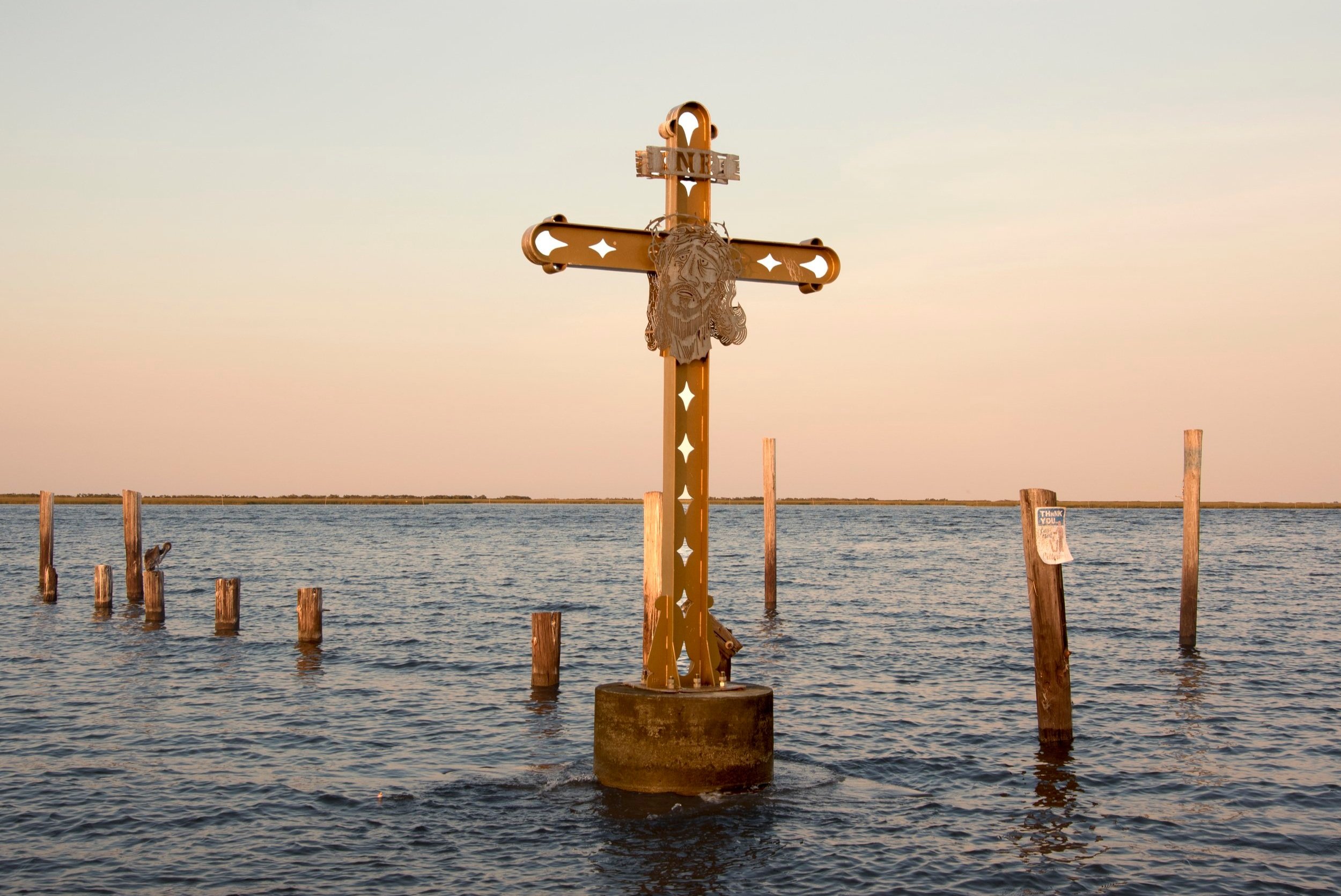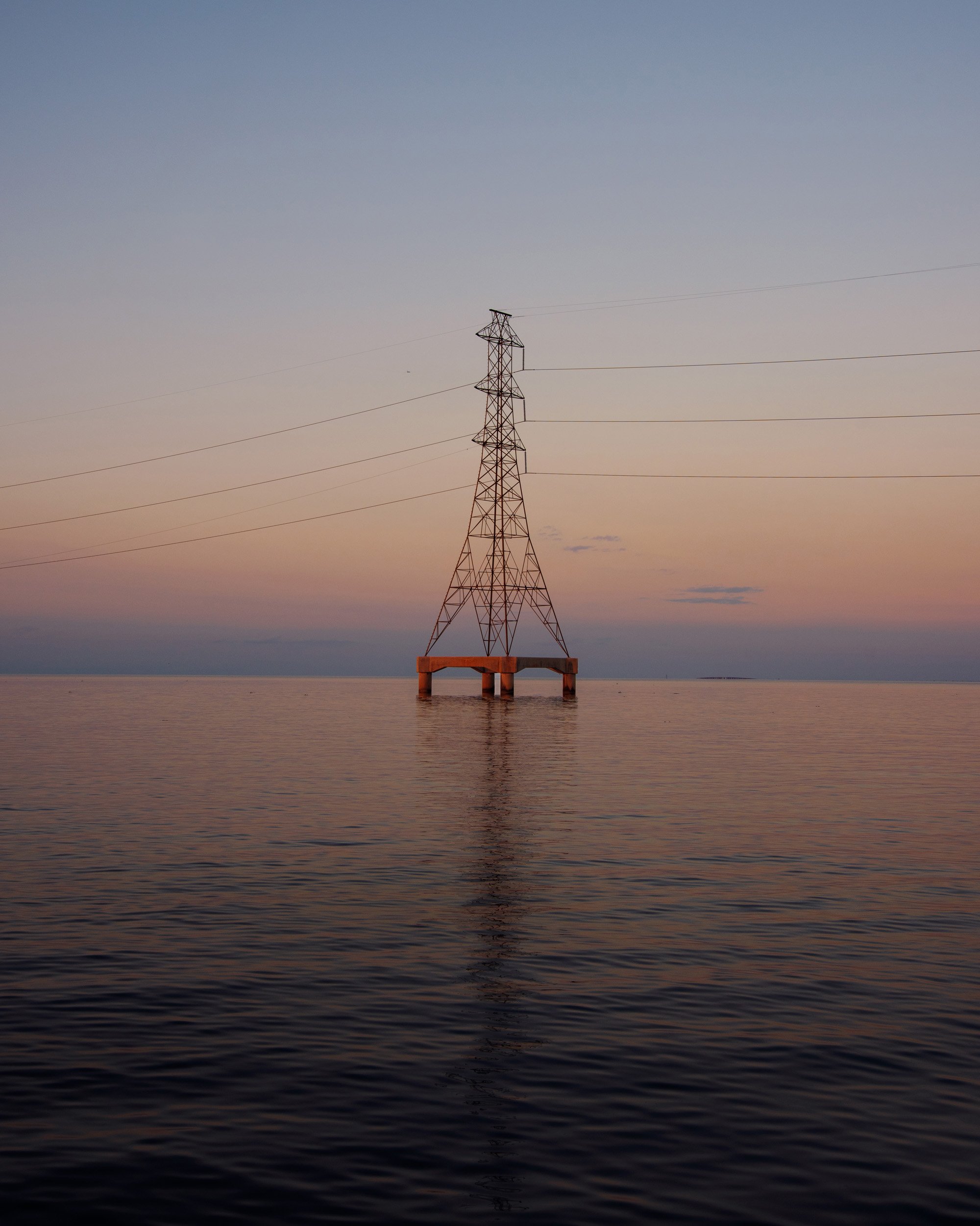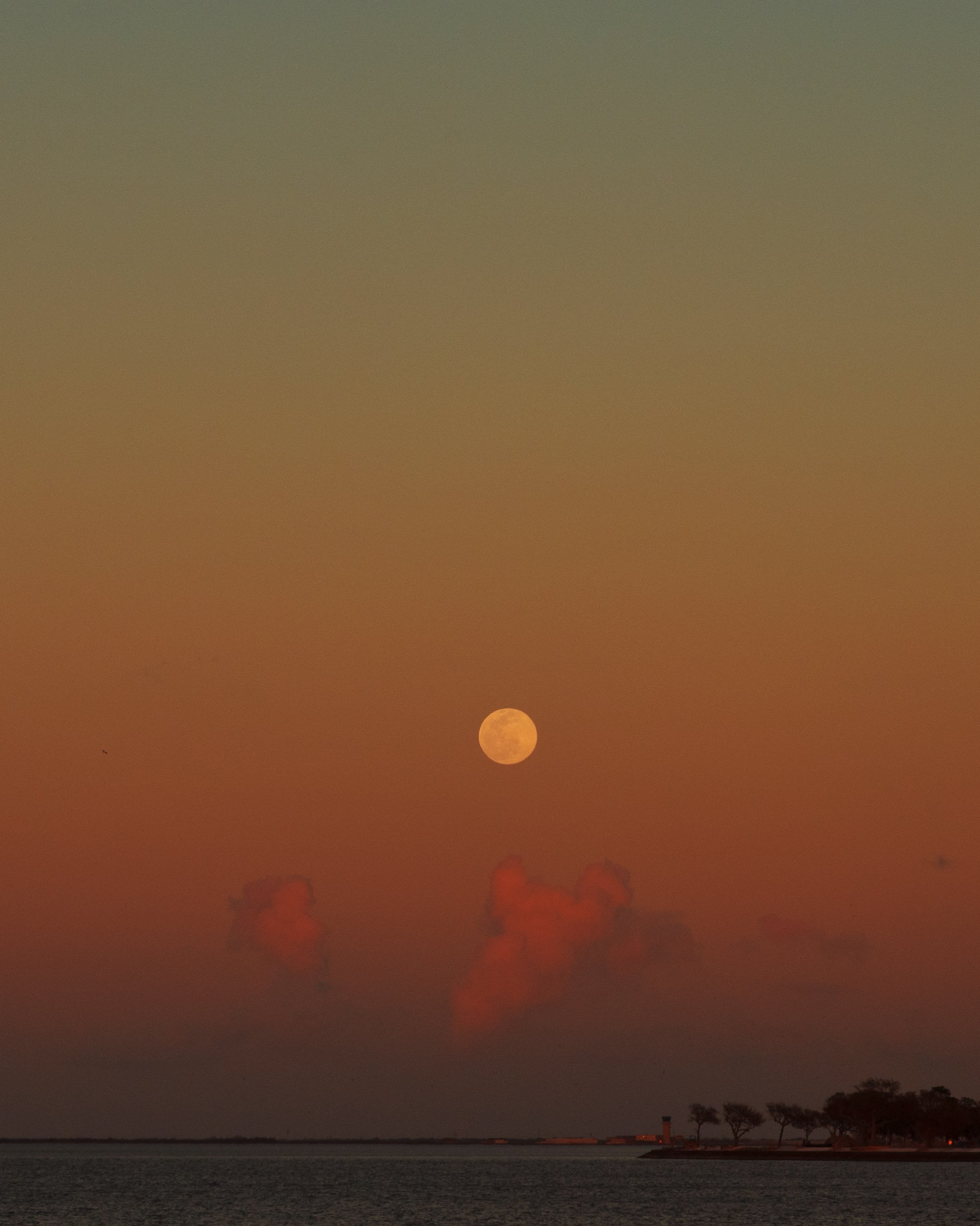Growing up in New York’s Hudson River Valley, photographer Virginia Hanusik saw her home heroically reflected in famous paintings. Now living and working in southeast Louisiana, Hanusik wants to capture the unsung beauty and nuanced narratives within the brutality of a landscape almost always seen through the lens of climate change.
Photos & Essay by Virginia Hanusik
November 8, 2022
On the 16th anniversary of Hurricane Katrina, Hurricane Ida, one of the strongest storms in Louisiana’s recorded history, made landfall at Port Fourchon, a major offshore oil hub that services approximately 90% of the Gulf’s production platforms and drilling rigs. The aftermath of Ida, like so many disasters before it, unfolded over sweeping, large-scale landscapes to convey the magnitude of the destruction. These kinds of images of disaster, often captured by way of aerial and drone photography, dominate the visual database used by the media to illustrate the violence of climate change. But in reality, a single picture from that kind of stock imagery library can’t describe the complexities of such a massive environmental transition. And while a photograph of the record-breaking flooding in LaPlace, Louisiana, as a result of Ida evokes both fear and awe, those feelings fade just as quickly as the new cycle transitions to another crisis.
What these images, consumed on a mass scale, don’t capture are important behavioral changes and the emotional connections residents have to that landscape — why they call this precarious place home. They certainly don’t show how Louisiana fits into the larger international paradigm shift of how we inhabit coastal space.
Lake Pontchartrain #8, 2022
Power Lines Near Kenner #2, 2020
Like the heroic 19th-century Hudson River School paintings connected an emerging national American identity to upstate New York (where I’m originally from) or how Carleton Watkins’ early photographs of the West were used for expansionist propaganda, this visual culture of disaster has turned south Louisiana into a commodity. But in the canon of American landscape art, the Gulf Coast is rarely represented by its inherent beauty like that of the Northeast and California, and that lack of representation ties into the region’s current environmental crisis.
Lake Pontchartrain #7, 2022
Louisiana’s coastal deterioration is due in part to the levee building along the Mississippi River and humankind’s attempt to control its natural course. After the Great Mississippi Flood of 1927, which inundated 27,000 square miles across several states, Congress nationalized flood control measures along the river and granted that work to the Army Corps of Engineers. When Hurricane Ida hit in 2021, the parishes most impacted, like Terrebonne and Lafourche, were fractions of the land masses that they had been a century ago. By focusing on the architecture, landscape, and infrastructure of south Louisiana, my images are a means to convey how we’ve altered the land through these engineering measures and subsequently how we’ve chosen to protect certain communities over others. I intentionally seek out soft colors and the incomparable light of Louisiana sunsets to reflect these landscapes as they stand outside the context of disaster.
Water, and the need to control it, is omnipresent here. Hurricane Ida was the biggest test of the multibillion-dollar levee system surrounding New Orleans and its suburbs. Once the storm had passed, it was clear that ambitious investments in infrastructure work. Still, the system remains vulnerable to a 100-year storm, the kind that has a 1% chance of occurring every year. And the system grows weaker with each square mile of coast lost to the Gulf of Mexico. Despite the instability of our present living situation, there’s simultaneously immense ethereal beauty here. I capture these moments in an attempt to convey the complexity of living with a changing climate while advocating for the value of this place that the rest of the country often sees as a sacrificial climate buffer zone, either through popular perception or policy.
Dusk at the Industrial Canal, 2021
This moment in time forces us to reckon with how living along the water will look very different in the coming decades — especially as invisible infrastructures like flood insurance alter the physical landscape. Architectural styles and land use patterns all provide insight into the values of a certain place. In my work, I explore the engineered habitats we have adopted in order to live on or near the water and the emotional ties that keep Louisianians calling this part of the state home.
Waking Up on the Mississippi River, 2021
As stronger storms, sea level rise, and the further encroachment of the fossil fuel industry threaten the physical fabric of south Louisiana, how will our mental and emotional connections to these landscapes be preserved? And how can the architecture of these places promote solutions to living and building that are more harmonious with the natural world? Inevitably, time will tell us. But until then, I am grateful for every day that I get to live and photograph in Louisiana.
Virginia Hanusik is an artist whose projects explore the relationship between landscape, culture, and the built environment. Her work has been exhibited internationally; featured in The New Yorker, National Geographic, British Journal of Photography, and Oxford American, among others; and supported by the Pulitzer Center, Graham Foundation, Landmark Columbus Foundation, and Mellon Foundation. She regularly writes and speaks on landscape representation and the visual narrative of climate change and is on the board of directors of The Water Collaborative of Greater New Orleans. From 2020-2021, she was a Photography Fellow with Exhibit Columbus, where her multiyear project on the Mississippi River watershed explored the history of flooding and politics of disasters in the region. She is a rising Climate in Crisis Resident at Tulane University’s A Studio in the Woods, where she is working on a body of work about the inequality of disaster relief along the Gulf Coast. She lives in New Orleans.
Opening photo: Hurricane Katrina Memorial on the Mississippi River Gulf Outlet, Shell Beach, Louisiana, 2020
More from The Bitter Southerner












